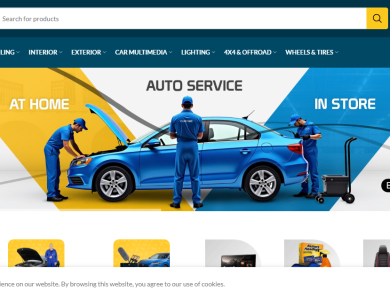
The Ultimate Guide to Selecting an Ad Website
The Ultimate Guide to Selecting an Ad Website
Choosing the right ad website can be a game-changer for any business looking to increase its online presence and reach the right audience. With a multitude of options available, it can be overwhelming to find a platform that aligns with your marketing goals, budget, and target demographics. To navigate this complex landscape, it’s essential to understand what makes an ad website effective and how to evaluate the available choices.
Understanding Your Advertising Goals
Clarify Your Objectives
The first step in selecting an ad website is to have a clear understanding of your advertising objectives. Are you aiming to drive traffic to your website, boost brand awareness, or increase sales conversions? Knowing the specific outcomes you desire will guide you in identifying platforms that best support those goals.
Define Your Target Audience
Identifying your target audience is crucial. Different ad websites cater to varying demographics, and having a clear audience profile will help you choose a platform where your potential customers are most active. Consider factors such as age, gender, geographic location, interests, and online behavior.
Evaluating Ad Website Options
Assess Reach and Traffic
A successful ad campaign hinges on reaching the right people. Analyze the reach and traffic statistics of potential ad websites to ensure they align with your target audience. Platforms with a high volume of users might seem attractive, but the relevancy of their audience to your business is more crucial than sheer numbers.
Investigate Ad Formats
The variety and effectiveness of ad formats available on a platform can significantly impact your campaign’s success. Popular formats include banner ads, video ads, native ads, and sponsored content. Evaluate how each option resonates with your target audience and complements your overall brand message.
Consider Cost and ROI
Budget constraints are often a primary concern for advertisers. It’s important to compare the cost structures of different ad websites, such as cost-per-click (CPC) or cost-per-impression (CPM). Additionally, assess the potential return on investment (ROI). Sometimes, a slightly higher initial cost can be justified if the conversion rate is correspondingly higher.
Key Features to Look for in an Ad Website
Robust Targeting Capabilities
A major strength of digital advertising lies in its ability to target specific audience segments. Look for ad websites that offer advanced targeting features, such as demographic filtering, interest targeting, and retargeting options.
Comprehensive Analytics
Data-driven decisions are critical for optimizing ad campaigns. Choose platforms that provide comprehensive analytics tools, allowing you to track ad performance, measure conversions, and understand user behavior. Access to detailed reports enables ongoing refinement and improvement of your advertising strategy.
User-Friendly Interface
An intuitive user interface can make the process of launching and managing ads more efficient. A well-designed interface reduces the learning curve, making it easier for you or your team to adjust campaigns in real-time without needing extensive technical expertise.
Popular Ad Websites to Consider
Google Ads
Google Ads is a leader in online advertising, offering keyword-based ads that reach users through search results and across millions of websites via the Google Display Network. Its vast reach and varied ad formats make it a versatile choice for many businesses.
Facebook Ads
Facebook Ads provides robust social media marketing solutions, allowing advertisers to target users based on detailed demographic information and interests. Its integration with Instagram further expands its reach, making it ideal for visually-driven campaigns.
LinkedIn Ads
LinkedIn Ads is an excellent platform for B2B marketing, enabling advertisers to target professionals based on job title, industry, and company size. Its focus on professional networking offers an unparalleled opportunity to engage with decision-makers.
Emerging Trends in Ad Websites
Programmatic Advertising
Programmatic advertising is revolutionizing the industry with its automated, real-time bidding processes. Ad websites that employ programmatic technologies facilitate more efficient ad buying and ensure that campaigns are shown to the most relevant audiences.
Increased Focus on Privacy
With growing concerns regarding data privacy, ad websites are increasingly prioritizing user consent and transparency. Being aware of how each platform handles user data and privacy can be beneficial for maintaining customer trust and complying with regulations.
Conclusion
Selecting the right ad website involves careful consideration of your unique business goals, audience, and budget. By leveraging the strengths of different platforms and staying informed about industry trends, you can create impactful advertising strategies that drive results. Whether you’re looking to enhance brand awareness, drive traffic, or increase sales, the right ad website can be a pivotal component of your marketing toolkit.
Navigating the world of digital advertising requires vigilance and adaptability. By continuously learning and adjusting your strategy in response to performance metrics, you can ensure long-term success and growth.



